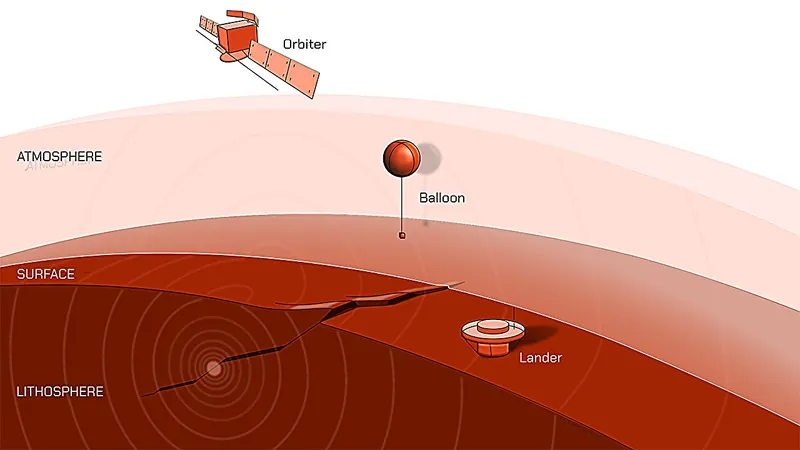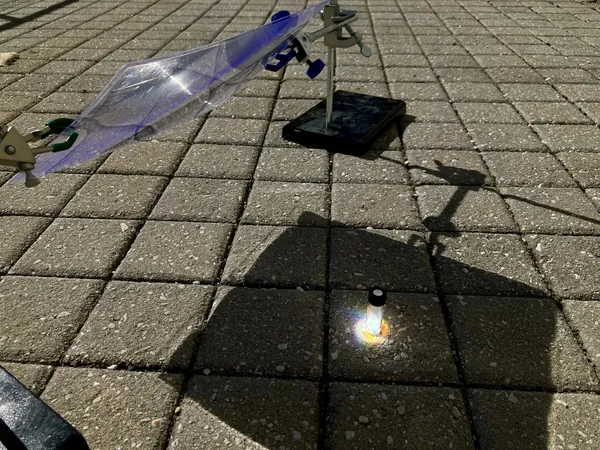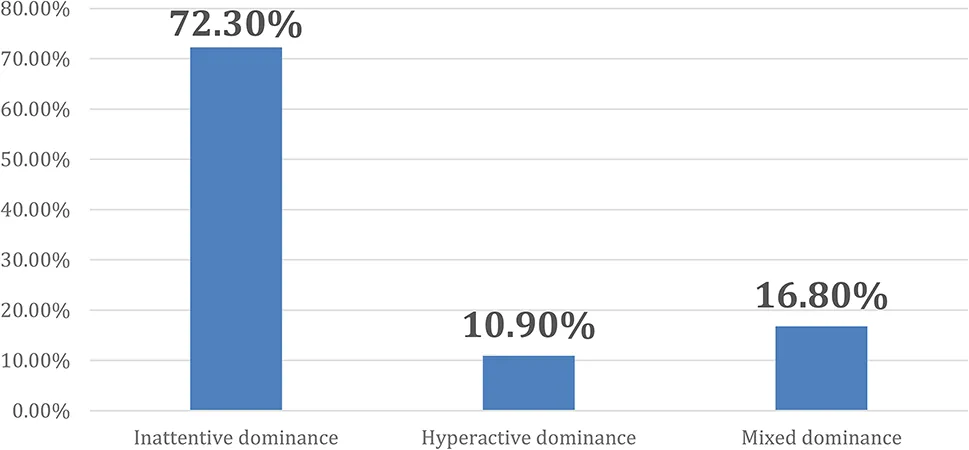
Unveiling the Secrets of Venusquakes: Innovative Methods from Balloons to Satellites!
2024-11-26
Author: Amelia
Introduction
Scientists have long been captivated by Venus, the second planet from the sun, but its hostile environment has posed significant challenges for researchers trying to understand its geological activities. Unlike the moon and Mars, where robotic landers have successfully recorded seismic activity, the extreme temperatures and high winds on Venus hinder similar measurements, leaving many questions about its internal structure unanswered.
Ground Sensors
In a groundbreaking study published in Earth and Space Science, researchers Raphael Garcia and his team outline three innovative methods to track potential seismic events, known as Venusquakes, offering a fresh glimpse into the enigmatic world of our neighboring planet. Ground sensors can measure seismic waves from quakes. However, the extreme surface temperatures of over 450°C would limit these devices' survival to less than a day. Despite this limitation, the potential for instantaneous seismic data is invaluable.
Balloon-Based Pressure Sensors
Taking inspiration from the Soviet Vega program, these high-altitude balloons could remain aloft for months. They utilize infrasound waves—low-frequency sound waves generated by seismic activity. Although they can only detect quakes in the magnitude range of 4.0–4.5, their ability to gather long-term data makes them a compelling option for monitoring seismicity in the dense atmosphere of Venus.
Satellite-Based Instruments
The researchers propose that satellite instruments capable of measuring airglow—the faint emission of light from molecules in the upper atmosphere—could be a game-changer. These instruments can detect disturbances caused by infrasound waves, enabling them to identify Venusquakes of similar magnitudes as balloon sensors but potentially sustain years of analysis.
Conclusion
The study highlights that airglow measurements currently represent the best method for detecting seismic activities on Venus. Garcia's team emphasizes that combining airglow sensing with the enduring nature of balloon-based sensors could provide even more accurate readings and minimize the risk of misinterpretation. As space agencies around the globe plan future missions to Venus, these insights are pivotal in refining the technology and methodologies necessary for investigating the planet’s seismic behavior. They point towards a future where we may finally unlock the mysteries of Venus's geological processes, uncovering the underlying dynamics of this hostile yet fascinating world.
Looking Ahead
Stay tuned as scientists delve deeper into Venus and unravel the secrets of its turbulent interior! What discoveries await us in the vastness of space?









 Brasil (PT)
Brasil (PT)
 Canada (EN)
Canada (EN)
 Chile (ES)
Chile (ES)
 España (ES)
España (ES)
 France (FR)
France (FR)
 Hong Kong (EN)
Hong Kong (EN)
 Italia (IT)
Italia (IT)
 日本 (JA)
日本 (JA)
 Magyarország (HU)
Magyarország (HU)
 Norge (NO)
Norge (NO)
 Polska (PL)
Polska (PL)
 Schweiz (DE)
Schweiz (DE)
 Singapore (EN)
Singapore (EN)
 Sverige (SV)
Sverige (SV)
 Suomi (FI)
Suomi (FI)
 Türkiye (TR)
Türkiye (TR)